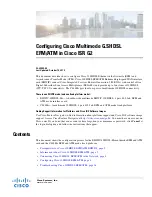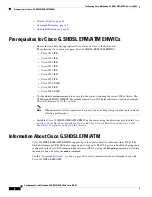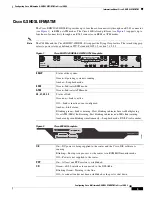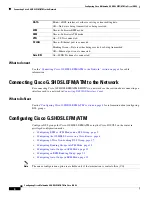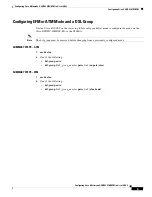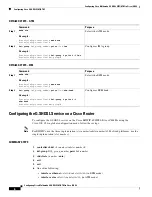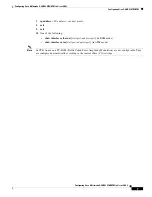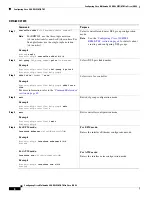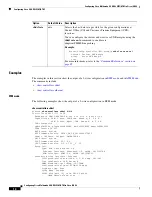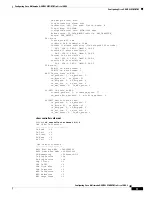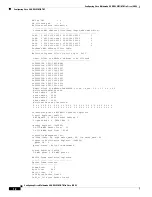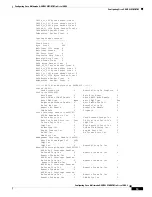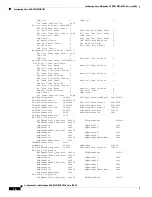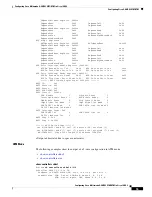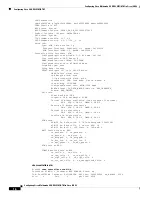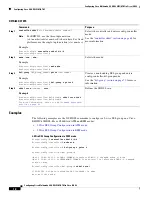
Configuring Cisco Multimode G.SHDSL EFM/ATM in Cisco ISR G2
Connecting Cisco G.SHDSL EFM/ATM to the Network
4
Configuring Cisco Multimode G.SHDSL EFM/ATM in Cisco ISR G2
What to do next
See the
“Connecting Cisco G.SHDSL EFM/ATM to the Network” section on page 4
for cable
information.
Connecting Cisco G.SHDSL EFM/ATM to the Network
For connecting Cisco G.SHDSL EFM/ATM EHWICs to a network, see the section about connecting an
interface card to a network in
Connecting DSL WAN Interface Cards
.
What to Do Next
See the
“Configuring Cisco G.SHDSL EFM/ATM” section on page 4
for information about configuring
DSL groups.
Configuring Cisco G.SHDSL EFM/ATM
Configure DSL groups for Cisco G.SHDSL EFM/ATM using the Cisco IOS CLI on the router in
privileged configuration mode.
•
Configuring EFM or ATM Mode and a DSL Group, page 5
•
Configuring the G.SHDSL Service on a Cisco Router, page 6
•
Configuring 2-Wire Non-bonding DSL Group, page 17
•
Configuring Bonding Groups in ATM Mode, page 19
•
Configuring Auto Groups in ATM Mode, page 22
•
Configuring an EFM-Bonding Group, page 23
•
Configuring Auto Groups in EFM Mode, page 25
Note
The annex configuration option is available only if the termination is central office (CO).
DATA
Blink—xDSL interface is either receiving or transmitting data.
Off—No data is being transmitted or being received.
EFM
Green—Indicates EFM mode.
ATM
Green—Indicates ATM mode.
VPN
On—VPN is connected.
FE LAN
Green—Ethernet port is connected.
Blinking Green—Data is either being received or being transmitted.
Off—Ethernet port is not connected.
Data BRI
On—ISDN D channel is connected.

